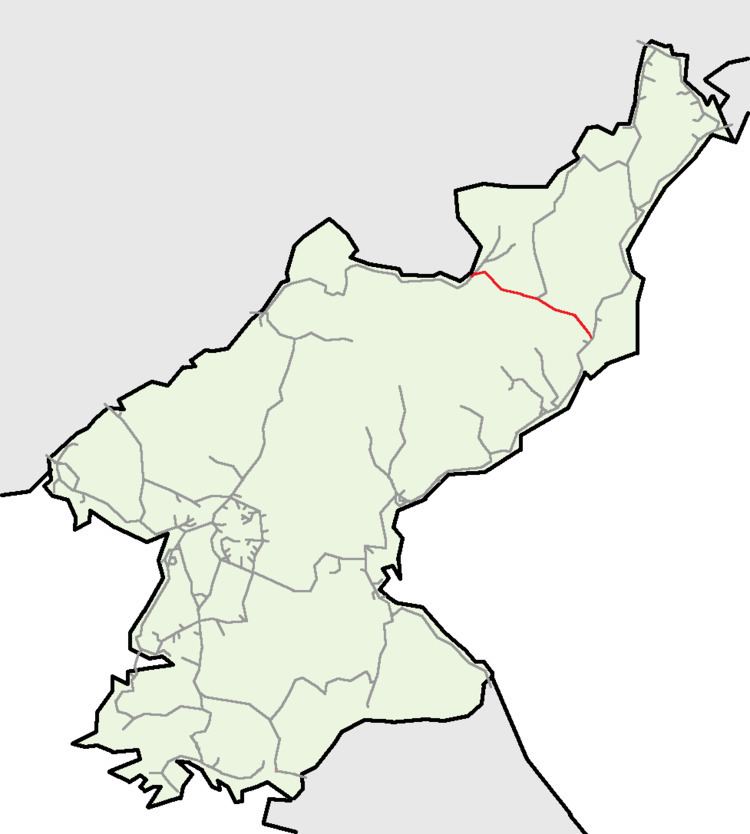Native name 백두산청년선(白頭山靑年線) Stations 22 | Status Operational | |
 | ||
Locale North HamgyŏngRyanggang Termini Kilju Ch'ŏngnyŏnHyesan Ch'ŏngnyŏn | ||
The Paektusan Ch'ŏngnyŏn Line is an electrified standard-gauge secondary mainline of the North Korean State Railway running from Kilju on the P'yŏngra Line to Hyesan on the Paengmu Line; it connects to two narrow-gauge railway lines: the Paengmu Line at Paegam Ch'ŏngnyŏn Station, and the Samjiyŏn Line at Wiyŏn Station.
Contents
This line traverses a very mountainous area; it has a ruling grade of 33‰ and a minimum curve radius of 250 metres. There are 74 bridges totalling 2,175 metres and 24 tunnels with a total length of 8,398 metres. The average distance between stations is 7.1 km. Service facilities on the line are at Hyesan for locomotives and at Wiyon and Paegam for rolling stock.
On 9 October 2006 an underground nuclear test was conducted at Punggye-ri Nuclear Test Site in Kilju County, causing the closure of the line for 3-4 months.
History
Construction was begun in May 1931 by the Chosen Government Railway to exploit the Paektusan region's abundant forest and mineral resources, and the line was opened in stages until its final completion in 1937:
Originally called the Hyesan Line or Kilhye Line (from the names of the two termini, Kilju and Hyesan), the line received its present name after the establishment of the DPRK. Electrification of the line was completed in September 1978.
Freight
Ore and forest products account for almost 93% of freight traffic in the direction towards Kilju, while almost half of the freight in the direction towards Hyesan is coal.
Ore is shipped from Namgye, talc, kaolin and magnesite from Simp'o-ri, and iron sulphide from Unhŭng. Logs are brought from the Paengmu Line to Paegam and forwarded to a large sawmill at Wiyŏn; raw logs are also shipped to the pulp mill and plywood factory in Kilju. The majority of freight moved on the line in the direction towards Hyesan is coal from Sinmyŏngch'ŏn on the P'yŏngra Line destined for use by residents and power plants in the region, along with grains, anthracite, fertiliser, cement etc. for local use.
Passenger
Passenger traffic on the Paektusan Ch'ŏngnyŏn line is significant, with much of that traffic being for visitors to the various "historic sites of the Revolution" in the region. There are also trains for local travellers, including connection to trains on the Samjiyŏn Line.
The following passenger trains are known to operate on this line:
Route
A yellow background in the "Distance" box indicates that section of the line is not electrified.
